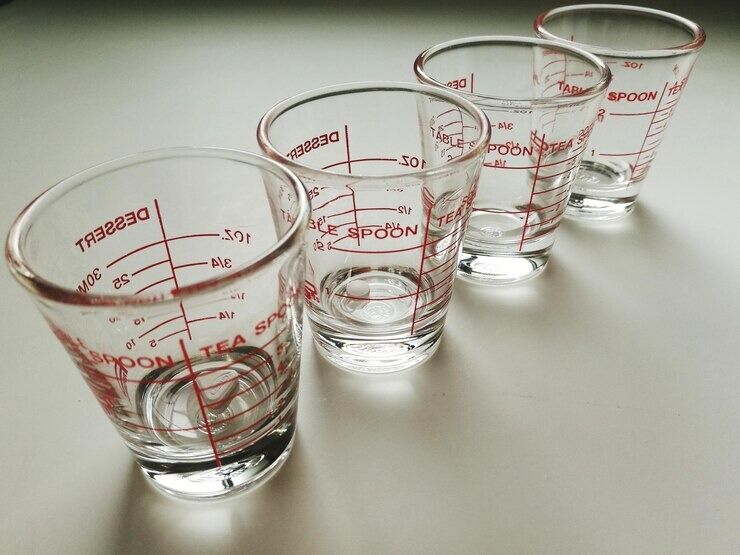Whether you’re cooking at home, scaling recipes for your business, or simply trying to understand drink sizes, knowing how to convert oz to cups is incredibly useful (If you’re working with milliliters, check out our full ml to cups guide here). With the right numbers at hand, you can save time, avoid mistakes, and feel more confident in the kitchen or during packaging decisions.
This guide will walk you through oz to cups conversions, offer a clear cups conversion chart, explain the difference between fluid ounces and weight ounces, and even provide an interactive calculator for quick, hassle-free results.
Why Ounces to Cups Conversion Matters

Whether you’re a home baker, a chef, or managing a catering supply order, understanding ounce-to-cup conversions saves time and ensures accuracy:
- Cooking & Baking: Precision prevents flat cakes or watery soups.
- Beverage Serving: Knowing how many cups fit in a 16 oz coffee cup helps with portion control.
- Food Packaging: Manufacturers and wholesalers often use ounces to label containers, but your customers may think in cups.
For example, a 32 oz soup container sounds large—but when you tell your customer it equals 4 cups, it becomes instantly clear.
The Basics: How Many Cups Are in an Ounce?
Here’s the quick answer:
- 1 US cup = 8 fluid ounces (fl oz)
- 1 fl oz = 1/8 of a cup
So if you’re holding a 16 oz cup, you know it’s exactly 2 cups.
But remember, this rule applies to fluid ounces (volume), not weight ounces (mass). That’s where many people get confused—more on that below.
Fluid Ounces vs. Dry Ounces: Don’t Get Tricked
This is where conversions can get messy.
- Fluid ounces (fl oz) measure volume (liquids like milk, juice, soup).
- Dry ounces (oz) measure weight (like flour, rice, or nuts).
Example:
- 8 fl oz of water = 1 cup.
- 8 oz of flour ≠ 1 cup (because flour is lighter and less dense).
Tip: If the recipe uses cups or fl oz, it’s talking about volume. If it uses oz or grams, it’s usually weight. Always check context.
Common Sizes: 12, 14, 16, 18, 20, 24, 32 oz to Cups (Quick Reference)
Here’s a simple conversion chart you can use anytime:
| Ounces (oz) | Cups |
|---|---|
| 1 oz | 0.125 cup (⅛ cup) |
| 2 oz | 0.25 cup (¼ cup) |
| 4 oz | 0.5 cup (½ cup) |
| 6 oz | 0.75 cup (¾ cup) |
| 8 oz | 1 cup |
| 12 oz | 1.5 cups |
| 16 oz | 2 cups |
| 18 oz | 2.25 cups |
| 20 oz | 2.5 cups |
| 24 oz | 3 cups |
| 32 oz | 4 cups |
Detailed Breakdown of Popular Sizes
Since many cups, bottles, and food containers are sold in ounces, here’s how they translate into cups:
- 12 oz = 1.5 cups
(Common soda can or small coffee cup) - 14 oz = 1.75 cups
(Often used for soup containers or juice bottles) - 16 oz = 2 cups
(Standard pint or medium smoothie) - 18 oz = 2.25 cups
(Large iced coffee size at many cafes) - 20 oz = 2.5 cups
(Often seen in reusable water bottles) - 24 oz = 3 cups
(Large takeout drink or iced tea) - 32 oz = 4 cups
(Quart-sized container, perfect for soups or meal prep)
Interactive Ounces to Cups Calculator
Here’s where we can make your experience easier than other sites: embed a simple calculator right into this page. Readers can type in their ounces and instantly see cups.
Ounces ⇄ Cups Converter
Why This Matters for Food Packaging
At InNature Pack, we often get questions from foodservice businesses about packaging sizes. For example:
- A 16 oz bagasse soup bowl = 2 cups of soup.
- A 24 oz salad bowl = 3 cups of salad.
- A 32 oz container = 4 cups, ideal for family-size orders.
By understanding these conversions, wholesalers and caterers can confidently order the right sizes and communicate clearly with their own customers.
Final Thoughts: Clarity Builds Trust
Whether you’re following a recipe or deciding between 12 oz vs 16 oz cups, knowing the exact ounce-to-cup conversion helps avoid mistakes and keeps customers satisfied.
Save this guide, use the conversion chart, and try out our calculator next time you’re in doubt.
At InNature Pack, we specialize in eco-friendly bagasse packaging including cups, bowls, clamshells, and custom containers. If you’d like to see samples or learn more about how our 12–32 oz containers can support your business, just contact us today or request a free catalog.
FAQs
Q1: How many cups in 12 oz?
12 oz = 1.5 cups.
Q2: Is 16 oz the same as 2 cups?
Yes, 16 oz equals exactly 2 cups.
Q3: Does 8 oz always equal 1 cup?
Only for liquids. For dry goods, 8 oz may be more or less than 1 cup, depending on the ingredient’s density.
Q4: How many cups in 32 oz?
32 oz = 4 cups (1 quart).